Search results for 'Chapter'
-
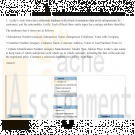
CS371 Database Design Week 5 Assignment Chapter 6 Questions
$20.00CS371 Database Design Week 5 Assignment Chapter 6 Questions
Learn More
Chapter 6 Exercises 1 page 154: Use MySQL Workbench to construct the relational diagram for this database.
Chapter 6 Exercises 2 page 154: Use MySQL Workbench to construct the relational diagram for this database.
Chapter 6 Exercise 5 page 155: Submit responses in Word Doc format.
You may submit a single word doc with SQL queries and your models pasted in – OR – submit separate files including PDFs of your models and a word doc with your queries.
Chapter 6 Exercise 1 page 154: Use MySQL Workbench to construct the relational diagram for this database:
1. Leslie’s Auto Sales has a relational database with which it maintains data on its salespersons, its customers, and the automobiles it sells. Each of these three entity types has a unique attribute identifier.
The attributes that it stores are as follows:
• Salesperson Number (unique), Salesperson Name, Salesperson Telephone, Years with Company
• Customer Number (unique), Customer Name, Customer Address, Value of Last Purchase From Us
• Vehicle Identification Number (unique), Manufacturer, Model, Year, Sticker Price Leslie’s also wants to keep track of which salesperson sold
which car to which customer, including the date of the sale and the negotiated price. Construct a relational database for Leslie’s Auto Sales.
Answer:
Chapter 6 Exercise 2 page 154: Use MySQL Workbench to construct the relational diagram for this database.
2. The State of New York certifies firefighters throughout the state and must keep track of all of them, as well as of the state’s fire departments. Each fire department has a unique department number, a name that also identifies its locale (city, county, etc.), the year it was established, and its main telephone number. Each certified firefighter has a unique firefighter number, a name, year of certification, home
telephone number, and a rank (firefighter, fire lieutenant, fire captain, etc.) The state wants to record the fire department for which each firefighter currently works and each firefighter’s supervisor. Supervisors are always higher-ranking certified firefighters.
Construct a relational database for New York’s fire departments and firefighters.
Answer:
Chapter 6 Exercise 5 page 155: Submit responses in Word Doc format.
5. In the General Hardware Corp. database of Figure 6.1, what would happen if:
a. The delete rule between the CUSTOMER and CUSTOMER EMPLOYEE relations is restrict and an attempt is made to delete the record for customer 2198 in the CUSTOMER relation?
b. The delete rule between the CUSTOMER and CUSTOMER EMPLOYEE relations is cascade and an attempt is made to delete the record for customer 2198 in the CUSTOMER relation?
c. The delete rule between the CUSTOMER and CUSTOMER EMPLOYEE relations is set to null and an attempt is made to delete the record for customer 2198 in the CUSTOMER relation?
d. The delete rule between the CUSTOMER and CUSTOMER EMPLOYEE relations is restrict and an attempt is made to delete the record for employee 33779 of customer 2198 in the CUSTOMER EMPLOYEE relation?
e. The delete rule between the CUSTOMER and CUSTOMER EMPLOYEE relations is cascade and an attempt is made to delete the record for employee 33779 of customer 2198 in the CUSTOMER EMPLOYEE relation?
f. The delete rule between the CUSTOMER and CUSTOMER EMPLOYEE relations is set-to-null and an attempt is made to delete the record for employee 33779 of customer 2198 in the CUSTOMER EMPLOYEE relation?
Answer: -
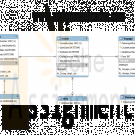
GU CS371 Database Design Week 4 Assignment Chapter 5 Relational Database Model
$20.00GU CS371 Database Design Week 4 Assignment Chapter 5 Relational Database Model
The assignment comes from Chapter 5 Minicase 1 but includes an additional step:
Using MySQL Workbench, create the relational data model for the database for happy cruise lines, which includes 6 tables. (Note: Be sure primary and foreign keys are correct). Export the PDF version of your model for submission.
Then complete steps a – g. Note: On step g, provide correct SQL syntax for finding the result to each item i – viii. i.e. Do not use the informal relational approach – looking for valid, correct SQL as described in Chapter 4.
You may submit a single word doc with SQL queries and your model pasted in – OR – submit 2 separate files including a PDF of your model and a word doc with your queries.Fundamentals of Database Management Systems 2nd Edition Chapter 5 Minicase 1
1. Consider the following relational database for Happy Cruise Lines. It keeps track of ships, cruises, ports, and passengers. A “cruise” is a particular sailing of a ship on a particular date. For example, the seven-day journey of the ship Pride of Tampa that leaves on June 13, 2009, is a cruise. Note the following facts about this environment.
Both ship number and ship name are unique in the SHIP Relation.
A ship goes on many cruises over time. A cruise is associated with a single ship.
A port is identified by the combination of port name and country.
As indicated by the VISIT Relation, a cruise includes visits to several ports, and a port is typically included in several cruises.
Both Passenger Number and Social Security Number are unique in the PASSENGER Relation. A particular person has a single Passenger Number that is used for all of the cruises that she takes.
The VOYAGE Relation indicates that a person can take many cruises and a cruise, of course, has many passengers.SHIP Relation
Ship Number
Ship Name
Ship Builder
Launch Date
GrossWeightCRUISE Relation
Cruise Number
Start Date
End Date
Cruise Director
Ship NumberPORT Relation
Port Name
Country
Number of Docks
Port ManagerVISIT Relation
Cruise Number
Port Name
Country
Arrival Date
Departure DatePASSENGER Relation
Passenger Number
Passenger Name
Social Security Number
Home Address
Telephone NumberVOYAGE Relation
Passenger Number
Cruise Number
Stateroom Number
FareAdditional step:
Using MySQL Workbench, create the relational data model for the database for happy cruise lines, which includes 6 tables. (Note: Be sure primary and foreign keys are correct). Export the PDF version of your model for submission.Then complete steps a – g.
Learn More
Note: On step g, provide correct SQL syntax for finding the result to each item i – viii. i.e. Do not use the informal relational approach – looking for valid, correct SQL as described in Chapter 4.
a. Identify the candidate keys of each relation.
b. Identify the primary key and any alternate keys of each relation.
c. How many foreign keys does each relation have?
d. Identify the foreign keys of each relation.
e. Indicate any instances in which a foreign key serves as part of the primary key of the relation in which it is a foreign key. Why does each of those relations require a multi-attribute primary key?
f. Identify the relations that support many-to-many relationships, the primary keys of those relations, and any intersection data.
g. Using the informal relational command language described in this chapter, write commands to:
Note: On step g, provide correct SQL syntax for finding the result to each item i – viii. i.e. Do not use the informal relational approach – looking for valid, correct SQL as described in Chapter 4.
i. Retrieve the record for passenger number 473942.
ii. Retrieve the record for the port of Nassau in the Bahamas.
iii. List all of the Ships built by General Shipbuilding, Inc.
iv. List the port name and number of docks of every port in Mexico.
v. List the name and number of every ship.
vi. Who was the cruise director on cruise number 38232.
vii. What was the gross weight of the ship used for cruise number 39482?
viii. List the home address of every passenger on cruise number 17543. -
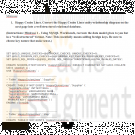
GU CS371 Database Design Week 6 Assignment Chapter 7
$20.00GU CS371 Database Design Week 6 Assignment Chapter 7
Fundamentals of Database Management Systems 2nd Edition
Chapter 7 Questions
Exercise 2 – Using MySQL Workbench, recreate the data model given to you but in a “well-structured” format. Note: This essentially means adding foreign keys. Be sure to choose key names that make sense.
Minicase 1 - Using MySQL Workbench, recreate the data model given to you but in a “well-structured” format. Note: This essentially means adding foreign keys. Be sure to choose key names that make sense.Exercise:
2. Convert the Central Hospital entity-relationship diagram on the next page into a well-structured
relational database. (Instructions: Exercise 2 – Using MySQL Workbench, recreate the data model given to you but in a “well-structured” format. Note: This essentially means adding foreign keys. Be sure to choose key names that make sense.)Minicase:
Learn More
1. Happy Cruise Lines. Convert the Happy Cruise Lines entity-relationship diagram on the next page into a well structured relational database.
(Instructions: Minicase 1 - Using MySQL Workbench, recreate the data model given to you but in a “well-structured” format. Note: This essentially means adding foreign keys. Be sure to choose key names that make sense.) -

GU CS371 Database Design Week 7 Assignment Chapter 8 Final Project
$20.00GU CS371 Database Design Week 7 Assignment Chapter 8 Final Project
Fundamentals of Database Management Systems 2nd Edition
Questions and Task:
Question 1
In your own words discuss the benefits of normalization.Question 2
Do you think we should normalize our designs to higher levels than 3NF? Why or why not?Question 3
There are 14 physical database design techniques discussed in chapter 8. The goal of a quality physical design is to improve performance while disrupting the logical design as little as possible. Pick a technique, which you believe to be the most beneficial in accomplishing the above goal, and explain your reasoning.Question 4
Discuss the concept of an index and explain how they improve performance. Assignment "Final Project Overview" You just took a job with a University and have been asked to track some information about the courses they offer. The previous employee was using a spreadsheet to track this information. The University is expanding from three classes to three hundred classes. Enrollment is expected to increase from around 20 students to 5,000. Your supervisors are not very tech savvy and they simply ask you to continue maintaining the spreadsheet. Review the spreadsheet labeled final_project.xlsx.Explain the issues that exist with maintaining the data in its current form.
Learn More
Explain the process of migrating the data in its current form to a well formed data model by highlighting the following in detail:
Identify required attributes that need to be tracked
Identify functional dependencies Show the redesign in 1NF, 2NF, and 3NF (similar to figures 7.29, 7.31, 7.33)
Explain the benefits of the data in its new form.
Create the E-R diagram of your relational tables using MySQL Workbench.
Provide the SQL statement required to create at least one of your tables.
Provide the SQL statement required to delete at least one of your tables.
Provide the SQL statement required to create a view which includes Course #, Course Name, Time, and Days only.
Identify at least one index, which you believe would improve performance.
Explain your choice.
Propose some additional data items, which you believe may be beneficial to the University if tracked in your database (i.e. Descriptions, more info about the instructors and students, departments, etc).
Describe the steps required to implement these additions.
If you add a course description attribute to your course table, there may be some performance impacts imposed by the addition of this text field.
Discuss a physical design technique to improve the performance of the new course description field. -
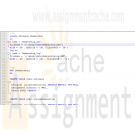
Murachs SQL for SQL Server Chapter 10 How to create and maintain databases and tables with SQL statements
$12.00Murach’s SQL for SQL Server Chapter 10 How to create and maintain databases and tables with SQL statements
Learn More
Exercises
1. Create a new database named Membership.
2. Write the CREATE TABLE statements needed to implement the following design in the Membership database. Include reference constraints. Define IndividualID and GroupID with the IDENTITY keyword. Decide which columns should allow null values, if any, and explain your decisions. Define the Dues column with a default of zero and a check constraint to allow only positive values.
3. Write the CREATE INDEX statements to create a clustered index on the GroupID column and a nonclustered index on the IndividualID column of the GroupMembership table.
4. Write an ALTER TABLE statement that adds a new column, DuesPaid, to the Individuals table. Use the bit data type, disallow null values, and assign a default Boolean value of False.
5. Write an ALTER TABLE statement that adds two new check constraints to the Invoices table of the AP database. The first should allow (1) PaymentDate to be null only if PaymentTotal is zero and (2) PaymentDate to be not null only if PaymentTotal is greater than zero. The second constraint should prevent the sum of PaymentTotal and CreditTotal from being greater than InvoiceTotal.
6. Delete the GroupMembership table from the Membership database. Then write a CREATE TABLE statement that recreates the table, this time with a unique constraint that prevents an individual from being a member in the same group twice. -
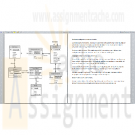
I.C.U Blinds Database Design ERD
$20.00I.C.U Blinds Database Design
A customer goes to the store to buy blinds. This customer is served by one salesperson in a department. This salesperson can have many customers. An installer is scheduled to measure the customer's house for blinds. The installer can have many customers but each customer is served by only one installer. When a customer buys a blind, an invoice is created for the transaction. Installers and sales people report to a manager. A manager may manage many employees.
Based upon a visit to the store and interviews with several store employees, consider the following:
Customer data must be stored including name, address, email address, and phone number. Sales person and installer data must be stored including name, address, phone number, hire date, and manager ID. Manager information is similar but the database must store information about the employees they manage. Each employee may also have dependents eligible for the company-provided health coverage. Information to be stored about dependents includes name and date of birth. Each blind has a SKU, price, and description associated with it. Each invoice may have multiple blinds on it. Invoices include date purchased, item quantity, and calculated fields such as item subtotals (qty * price), and grand total.You have been asked to design a database for “I.C.U Blinds” based upon your expertise in databases.
CHOOSE ONE OF THE FOLLOWING (AND ONLY ONE)
Option #1 (Rock)
Draw the dependency diagrams which step through the normalization process (1NF, 2NF, and 3NF). Denormalize as needed and show your final dependency diagram. If you do denormalize, explain the reasoning behind each case. Please follow the formatting guidelines as per the normalization homework assignment we did. What you should turn in, is similar to the Chapter 5 assignment.Option #2 (Hard Place)
Break down the scenario into the component relationships. For each relationship, write the associated one liner, and the 4 sentences. Combine these relationships and in Visio, draw the ERD associated with your solution. Be sure to note all attributes, PKs, FKs, cardinality, optional and mandatory relationships, strong/weak relationships and entities. What you should turn in, is very similar to the Chapter 4 assignments.Tips and tricks
Learn More
Carefully consider each question and do not be afraid to add attributes – some will be needed (e.g. primary and foreign keys), some need to be inferred – (e.g. purchase date for the invoice), and some will be calculated (e.g. totals). As we have learned in class, remember in your answers that good solutions take into account the trade-offs between number of tables, the amount of data redundancy, and data to be entered for each transaction. -
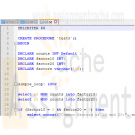
Murachs MySQL My Guitar Shop Database Chapter 13
$20.00Murach's MySQL My Guitar Shop Database Chapter 13
QUESTION 1
Write a script that creates and calls a stored procedure named test. This stored procedure should declare a variable and set it to the count of all products in the Products table. If the count is greater than or equal to 7, the stored procedure should display a message that says, “The number of products is greater than or equal to 7”. Otherwise, it should say, “The number of products is less than 7”.QUESTION 2
Write a script that creates and calls a stored procedure named test. This stored procedure should use two variables to store (1) the count of all of the products in the Products table and (2) the average list price for those products. If the product count is greater than or equal to 7, the stored procedure should display a result set that displays the values of both variables. Otherwise, the procedure should display a result set that displays a message that says, “The number of products is less than 7”.QUESTION 3
Write a script that creates and calls a stored procedure named test. This procedure should calculate the common factors between 10 and 20. To find a common factor, you can use the modulo operator (%) to check whether a number can be evenly divided into both numbers. Then, this procedure should display a string that displays the common factors like this:
Common factors of 10 and 20: 1 2 5QUESTION 4
Write a script that creates and calls a stored procedure named test. This stored procedure should create a cursor for a result set that consists of the product_name and list_price columns for each product with a list price that’s greater than $700. The rows in this result set should be sorted in descending sequence by list price. Then, the procedure should display a string variable that includes the product_name and list price for each product so it looks something like this:
"Gibson SG","2517.00"|"Gibson Les Paul","1199.00"|
Here, each value is enclosed in double quotes ("), each column is separated by a comma (,) and each row is separated by a pipe character (|).QUESTION 5
Learn More
Write a script that creates and calls a stored procedure named test. This procedure should attempt to insert a new category named “Guitars” into the Categories table. If the insert is successful, the procedure should display this message:
1 row was inserted.
If the update is unsuccessful, the procedure should display this message:
Row was not inserted - duplicate entry. -

COM 330 Student Database Design in Access
$15.00Student Database Design in Access
Using the student database designed from Chapter 2, create a simple Access Database with a minimum of 15 students, 4 classes each, 5 different instructors, in four different classroom buildings.For example, Jennifer Smith has Math 101, Biology 201, Chemistry 100, and Speech 101. She has instructor Kelli Jones, Tom Tinker, Bryan Solider, Tiger Woods. Her building would include Silly Science, The Pond building, Mighty Duck, and Jimmy Carter. In your database design forms and queries.
Learn More -

COM 330 Chapter 6 Assignment
$20.00COM 330 Chapter 6 Assignment
Learn More
1. Using the STUDENT table structure shown in Table P6.4, do the following.
Table P6.4 Sample STUDENT Records
Attribute Name Sample Value Sample Value Sample Value Sample Value Sample Value
STU_NUM 211343 200128 199876 199876 223456
STU_LNAME Stephanos Smith Jones Ortiz McKulski
STU_MAJOR Accounting Accounting Marketing Marketing Statistics
DEPT_CODE ACCT ACCT MKTG MKTG MATH
DEPT_NAME Accounting Accounting Marketing Marketing Mathematics
DEPT_PHONE 4356 4356 4378 4378 3420
COLLEGE_NAME Business Admin Business Admin Business Admin Business Admin Arts & Sciences
ADVISOR_LNAME Grastrand Grastrand Gentry Tillery Chen
ADVISOR_OFFICE T201 T201 T228 T356 J331
ADVISOR_BLDG Torre Building Torre Building Torre Building Torre Building Jones Building
ADVISOR_PHONE 2115 2115 2123 2159 3209
STU_GPA 3.87 2.78 2.31 3.45 3.58
STU_HOURS 75 45 117 113 87
STU_CLASS Junior Sophomore Senior Senior Junior
c. Write the relational schema and draw the dependency diagram to meet the 3NF requirements to the greatest extent possible. If you believe that practical considerations dictate using a 2NF structure, explain why your decision to retain 2NF is appropriate. If necessary, add or modify attributes to create appropriate determinants and to adhere to the naming conventions.
d. Draw the Crow’s Foot ERD.
Load the data from table P6.4 into an Access database. Add 5 additional students (make up your data) following the table structure.
Create a query in Access that list the students who have a Statistics major.
List the students who have a GPA of 3.45 or higher in a report.
Report the students who have the same advisor.
Submit c and d as an attachment, attach your Access database. -

COM 330 Chapter 11 Assignment
$20.00COM 330 Chapter 11 Assignment
Learn More
Find the solutions to Problems 1 and 2 based on the following query:
SELECT EMP_LNAME, EMP_FNAME, EMP_AREACODE, EMP_SEX
FROM EMPLOYEE
WHERE EMP_SEX = ‘F’ AND EMP_AREACODE = ‘615’
ORDER BY EMP_LNAME, EMP_FNAME;
1. What is the likely data sparsity of the emp_sex column?
2. What indexes should you create? Write the required sql commands.
Problems 4-6 are based on the following query:
SELECT EMP_LNAME, EMP_FNAME, EMP_DOB, YEAR(EMP_DOB) AS YEAR
FROM EMPLOYEE
WHERE YEAR(EMP_DOB) = 1966;
4. What is likely data spatsity of the EMP_DOB column?
5. Should you create an index on EMP_DOB?
6. What type of database I/O operations will likely be used by the query?




